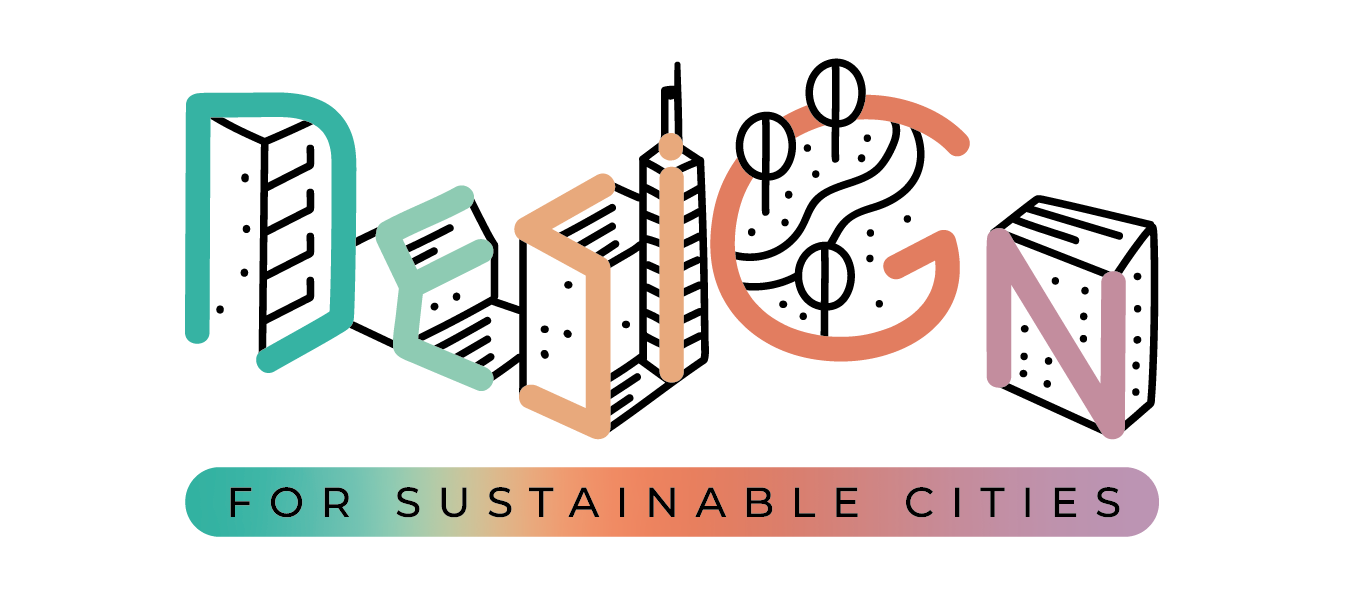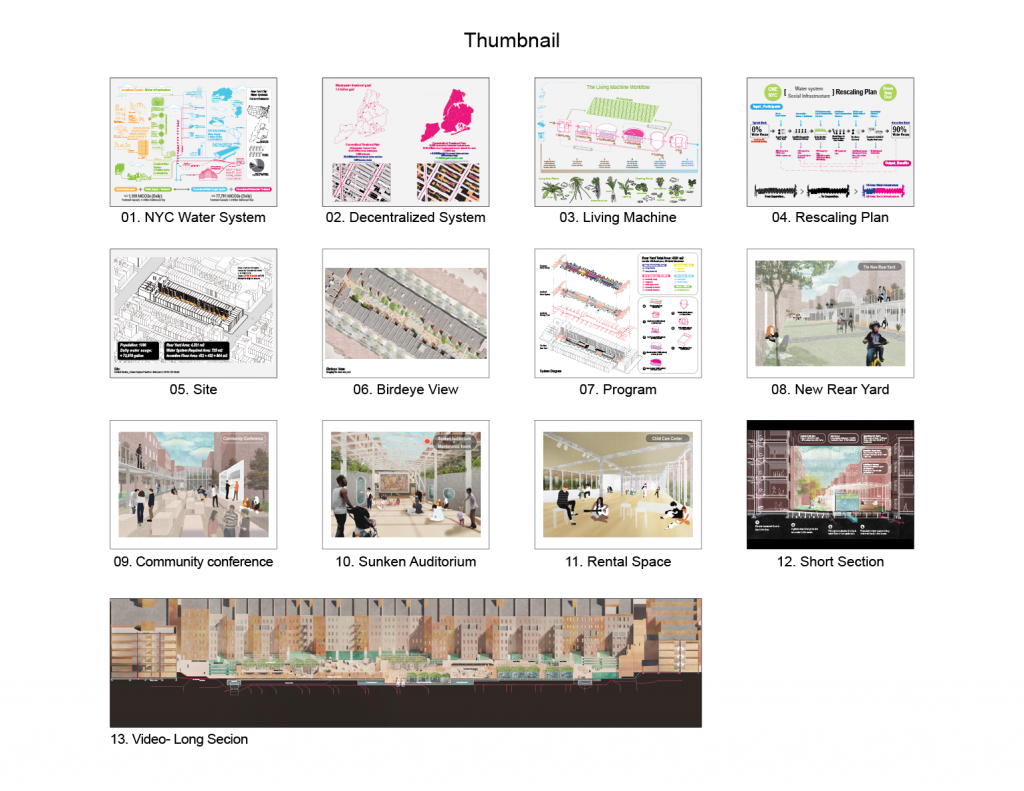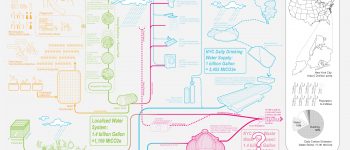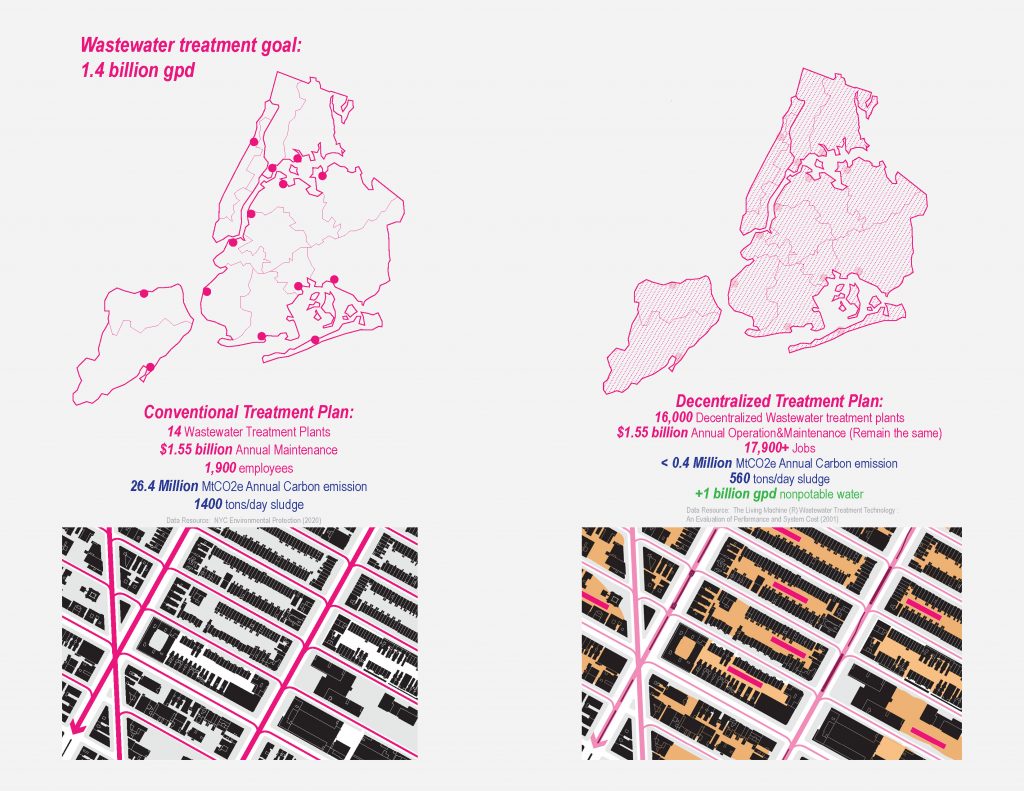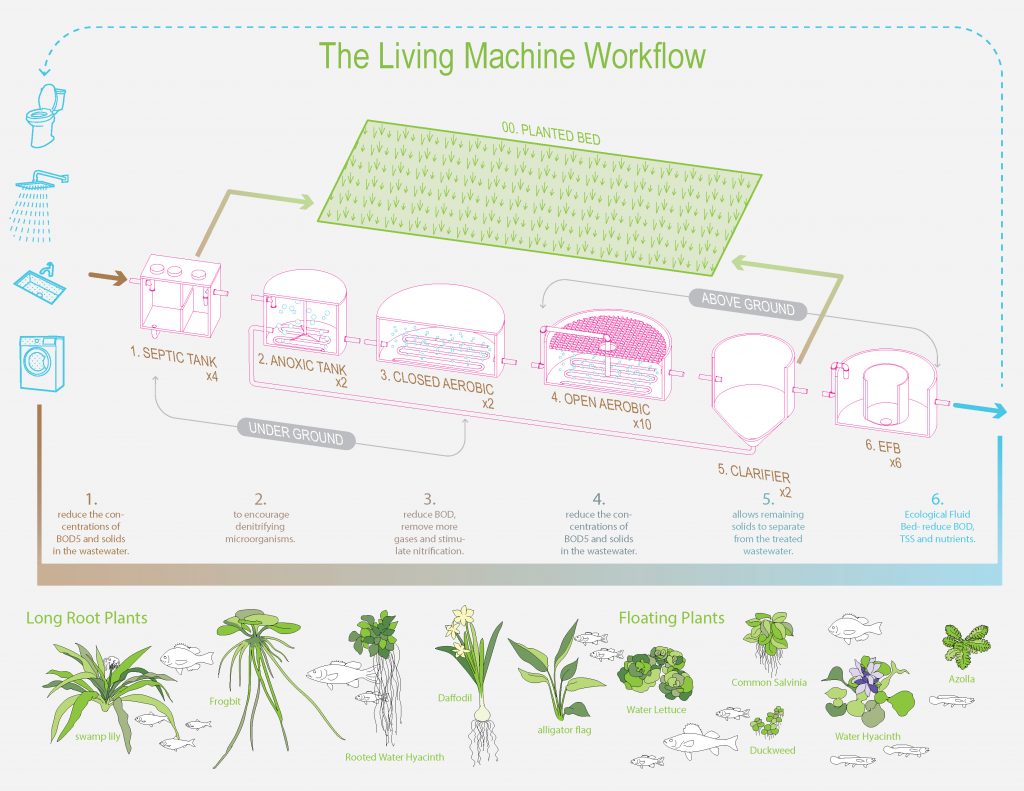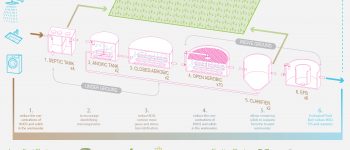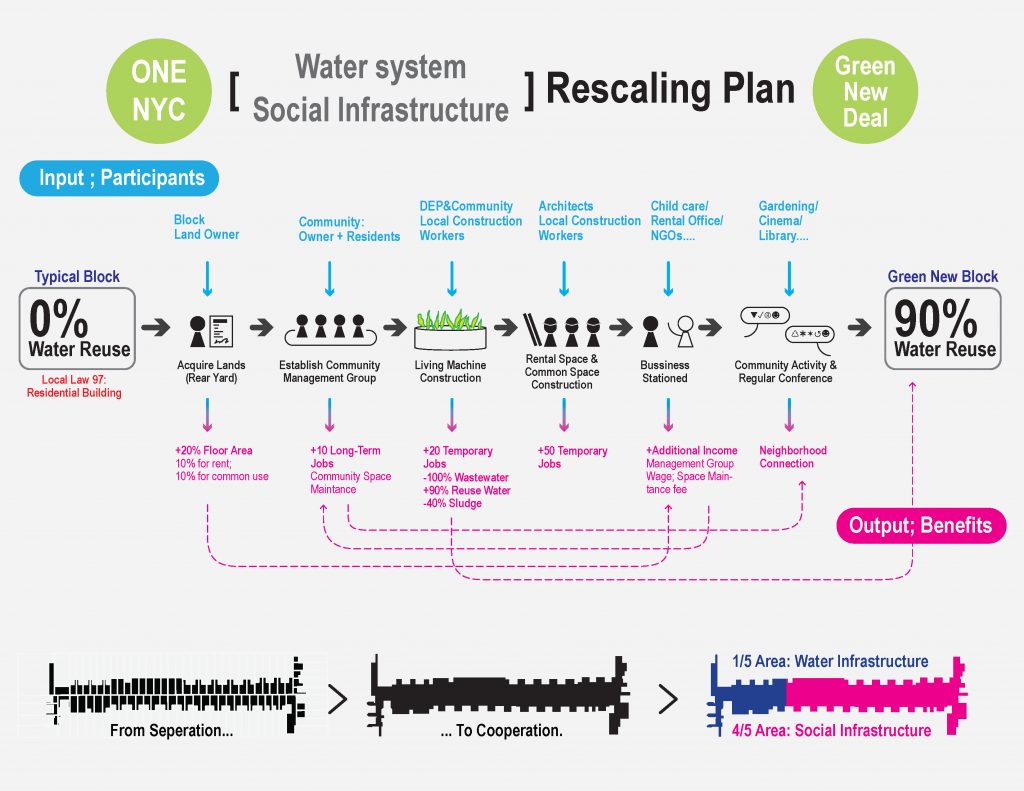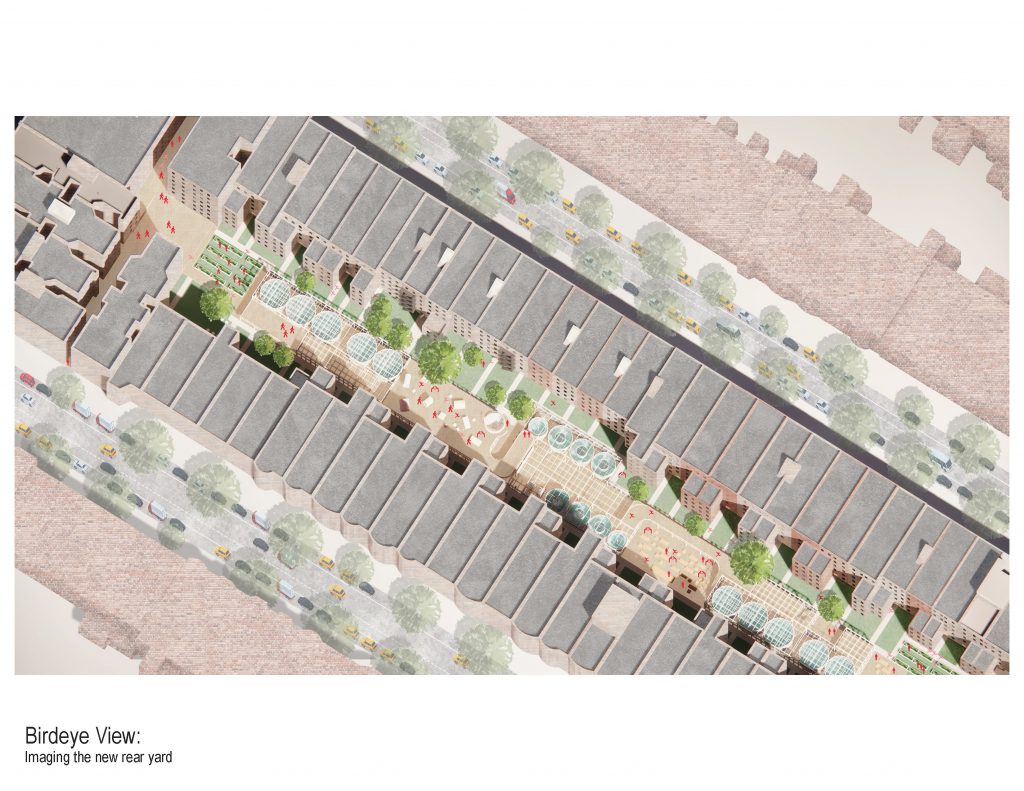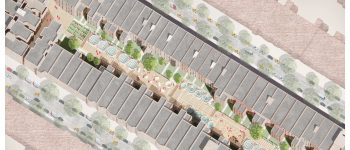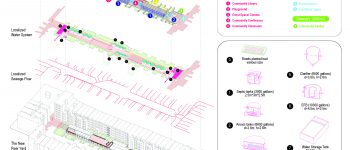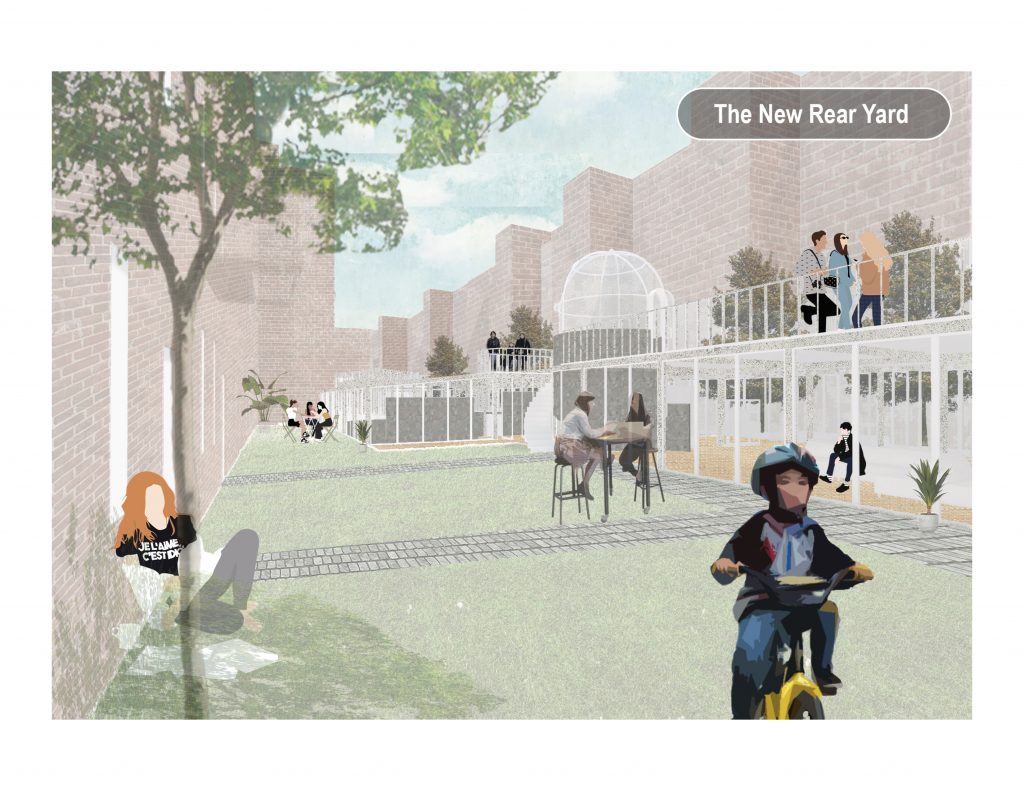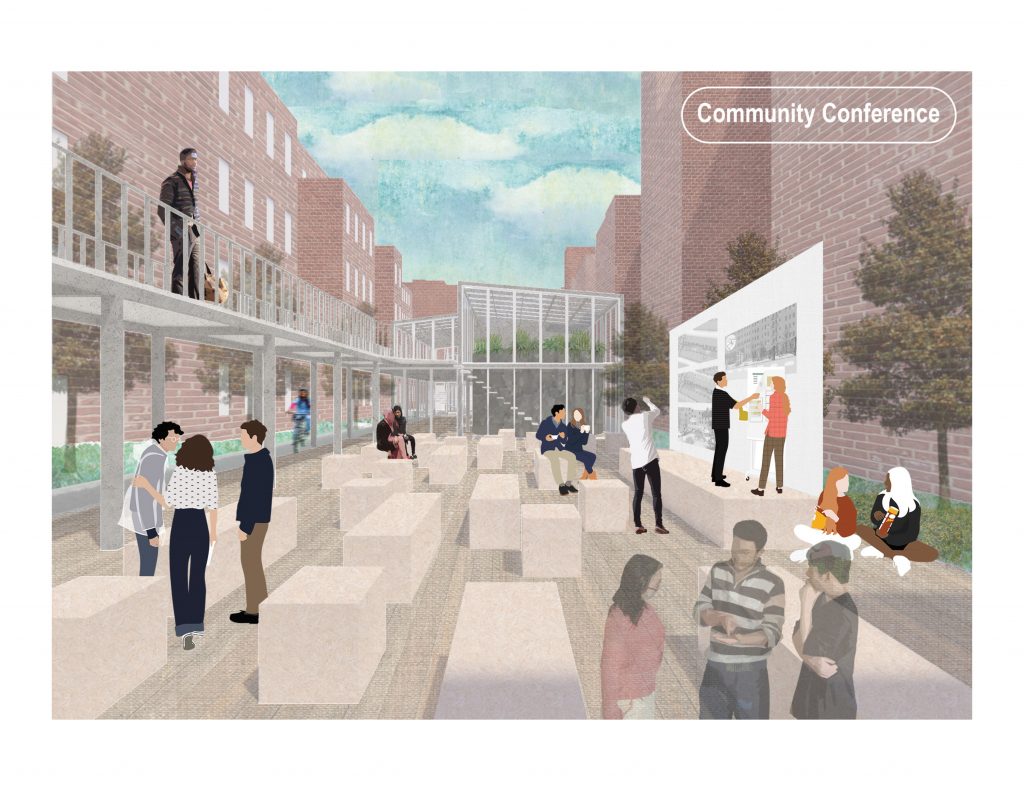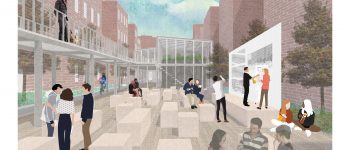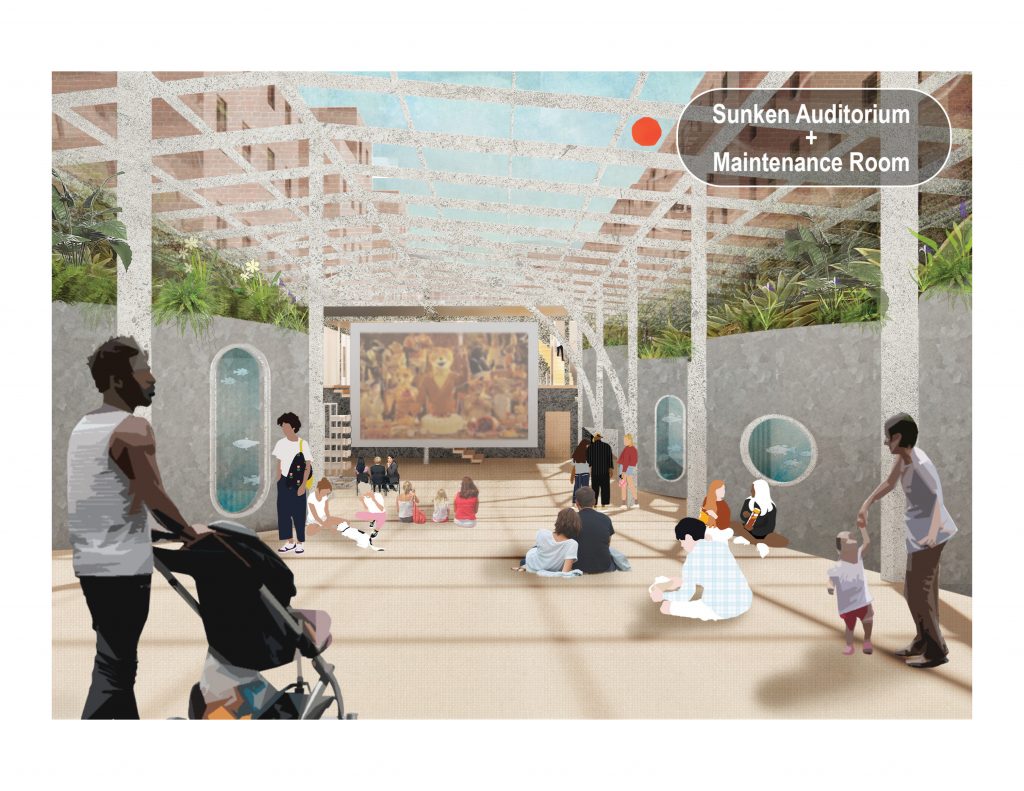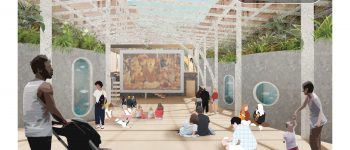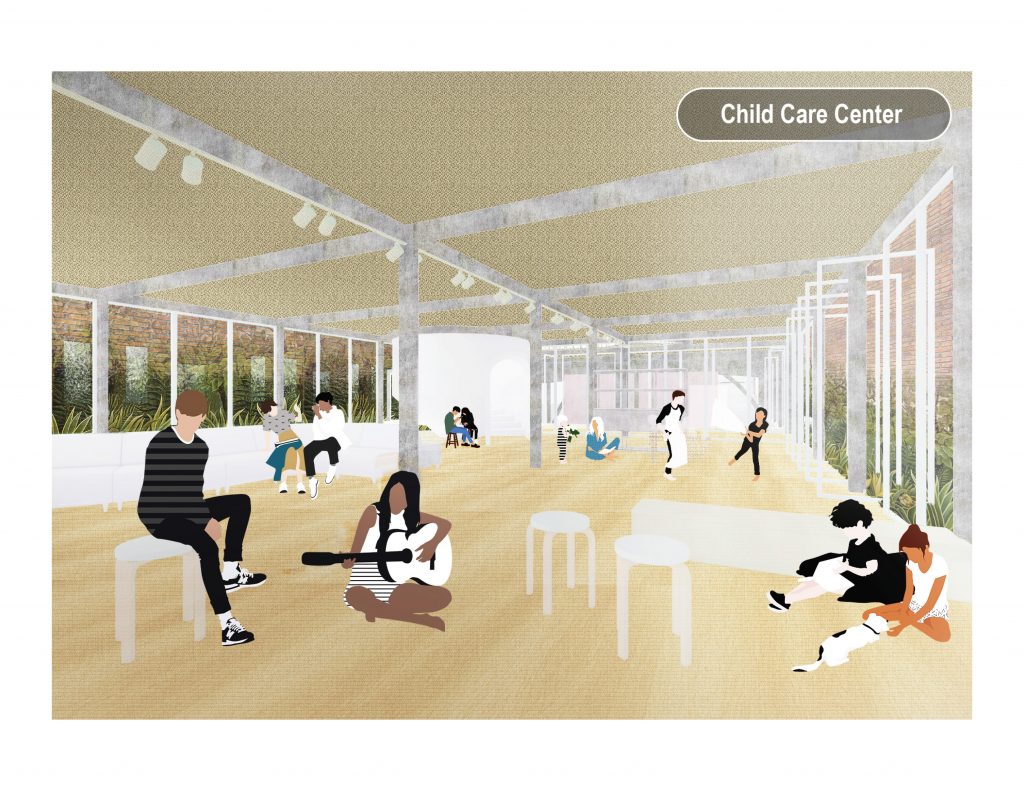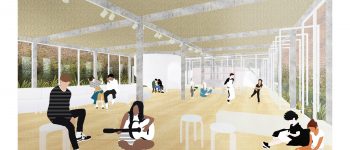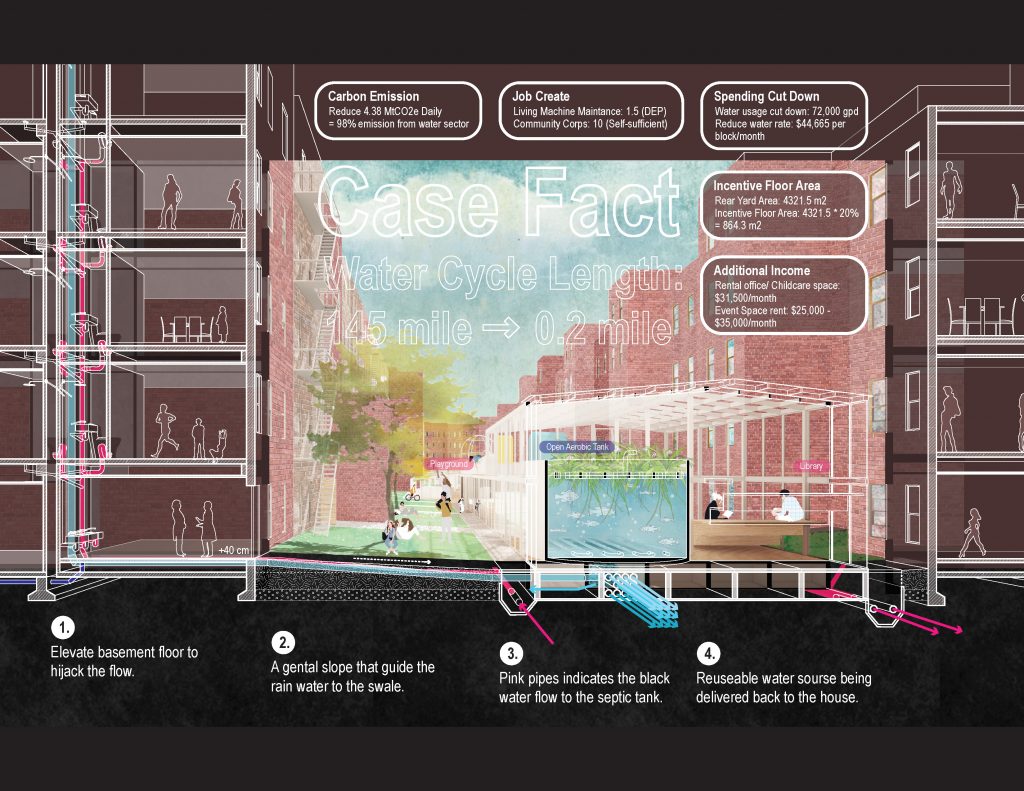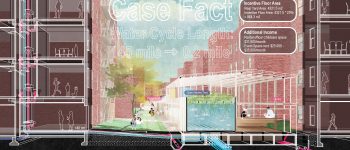This project aims at decarbonization in city scale, creating green new jobs, and building a closer community in urban area. Reframing the infrastructure is inevitable when aiming at carbon-neutrality. This project is especially designed for New York City, focuses on both the infrastructure reframing and the lot rezoning. By rescaling the water supply and the wastewater treatment system into block size, there is a chance to give more agency to the community and at the same time cut 98% of the carbon emission from water sector. Today in NYC, the amount of carbon emission caused by water system requires 1/5 of United States total forest to absorb. Moreover, the combined sewage is pouring 74 million gallons of waste water into New York Harbor Daily. We lost the sense of connection with this huge cycle, and we are unable to aware of our own cause.
This project focuses on both the infrastructure reframing and the lot rezoning. By rescaling the water supply and the wastewater treatment system into block size, there is a chance to give more agency to the community and at the same time greatly lower the carbon emission. One core concept of this project is to rescale the cycle—Today in NYC, whenever we open our tap, we launch a system over 145 miles long, which is about the length of 11 Manhattan. The amount of carbon emission caused by this system requires 1/5 of United States total forest to absorb. We lost the sense of connection with this huge cycle, and we are unable to aware of our own cause.
The wastewater treatment model in this project is the living machine. The living machine is a form of ecological sewage treatment plant, that mimic the processes of tidal wetlands to naturally treat wastewater. Compare with the conventional model, living machine requires less operating energy and produces lot less carbon emission. However, in order to provide enough sun light for the eco system to thrive in living machine, it is a model that requires a lot more area to treat the same amount of water. The public space is no longer enough, therefore the rescaling plan must seek for collaboration with local landowners.
The rescaling plan is a government leading project that encourages the citizens to upgrade their own block to avoid the penalty from the more stringent Local Law 97. The plan is a bottom-up approach that opens for the landowners to actively participate in. The process would start with the current residents establishing the community management group to run the 20% incentive floor area provided by the infrastructure reframing plan. 10% floor area should be run as communal spaces that can include library, auditorium, and other community-based programs; the other 10% floor area is open for rent in order to provide additional income for the new rear yard. The rescaling plan is able to create more jobs, cut the emission, and to support people with clean and stable water source.
The new rear yard is not just a water treatment plant, but also a communal space for people to build connection. In this model, 98% of carbon emission from water sector is cut off, and the water reuse rate is over 90%.
This is a government leading project that requires landowners to actively participate in. In 2019, NYC enacted Local Law 97 as a part of the Climate Mobilization Act. This law starts with placing carbon caps on buildings larger than 25,000 sqft, and will become more stringent over time. Under such circumstances, there is a chance for city government to upgrade its infrastructure systems cooperating with citizens. The infrastructure rescaling plan encourages the community to upgrade their own block to avoid the penalty of LL97, while also receive the 20% incentive floor area for providing the rear yards. The process would start with the current residents establishing the community management group to run the 20% incentive floor area. 10% floor area should be run as communal spaces that can include library, auditorium, and other community-based programs; the other 10% floor area is open for rent in order to provide additional income for the new rear yard. The rescaling plan is able to create more jobs, cut the emission, build a stronger community and to support people with clean and stable water source.
